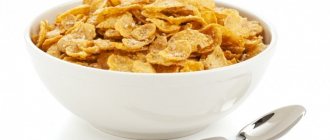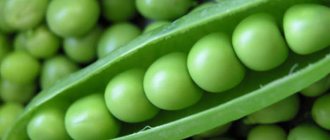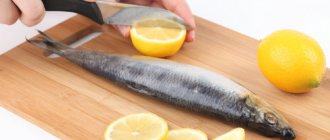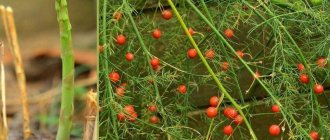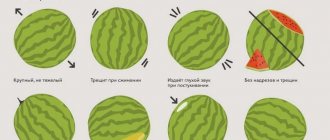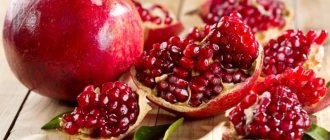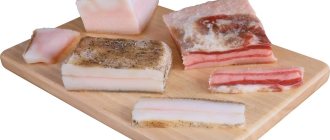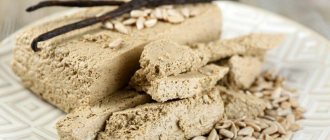pros
- This vegetable is rich not only in water, but also in mineral salts of iodine, potassium, silicon, sulfur, enzymes, fructose, essential oils, as well as vitamin C and carotene.
- Fresh cucumber juice has been noted to have the ability to destroy certain types of bacteria, including staphylococci.
- Cucumber is considered a hypoallergenic vegetable.
- Grated cucumber or fresh juice from this vegetable have mild laxative properties.
In what form should cucumbers be given?
For the little ones, the cucumber needs to be peeled. Even during the season, it may contain nitrates. Vegetable peels are coarse fiber, which is difficult for children’s delicate digestive tract to handle. Offer your one-year-old baby grated cucumber seasoned with olive oil or low-fat sour cream. A baby will be able to eat a whole or sliced vegetable at 1.5-2 years of age. If you are not sure about the quality of the product, then before using it, it is better to soak it in salt water for 2 hours. In this case, you need to change the water several times.
What are the benefits of cucumbers
As a rule, when preparing a diet, every mother focuses on the composition of the product, arguing for its inclusion in the menu because of its benefits. The situation with cucumber is more complicated - this vegetable contains practically no vitamins and minerals, since it consists mainly of water.
More articles related to your question
- What vegetables and fruits can be eaten during breastfeeding: time and features of introducing fruits into the diet of a nursing mother
- Green feces in formula-fed and breast-fed infants: what do you need to know?
- Paracetamol: is it acceptable to take it during lactation?
- Is it possible to eat sushi during lactation?
- Baby sleeping on his stomach: is it dangerous?
- Is it possible to dye hair during breastfeeding: what harm can the dye cause to the baby’s body and is there a great risk?

The minimum content of the mineral-vitamin complex cannot make green fruit really necessary. But dietary fiber, low calorie content, a certain laxative and diuretic effect make cucumber useful, especially for those who want to lose a few extra pounds. And, as you know, after childbirth, almost every mother has them.
When can I try it?
Before including a new product in the diet of a nursing woman, you should think not only about yourself, but also about the baby. The fact is that a fresh cucumber on breastfeeding can revolutionize the intestines of a newborn. As a result, the baby will suffer from increased gas formation, bloating, and painful colic, which can also lead to the development of dysbiosis. That is why during lactation in the first month it is recommended to avoid fresh fruits.
It is recommended to try fresh vegetables after the neonatal period ends - at about 1.5 months. But at this time, the baby may suffer from colic, since his digestive system has not yet matured. Therefore, only you can decide whether cucumbers are suitable for breastfeeding - based on the condition of the baby as a whole.
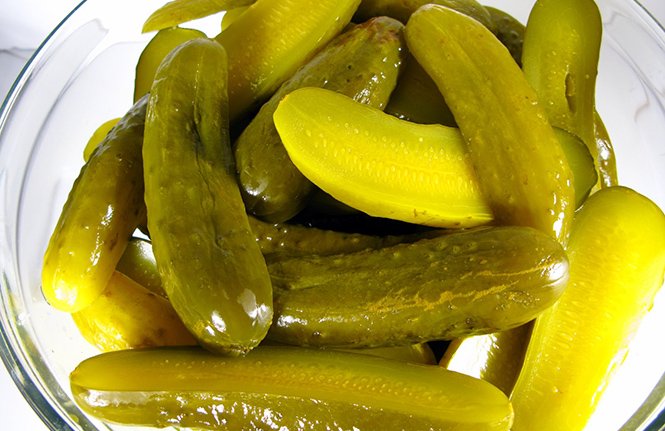
Natural colic, or rather the maturation of the baby’s gastrointestinal tract, finally occurs in the third month, and by the 4th month the baby’s digestion is improved. Then mom can try a piece of cucumber. But it is recommended to do this only in the morning, so that in case of a negative reaction from the baby’s body, bloating and colic will go away by the evening. If the test is successful, doctors advise consuming fresh vegetables in small quantities.
Preview:
Lesson “Living World” 1B grade
Teacher: Baryshnikova Tatyana Anatolyevna
Subject. Vegetables. Cucumber.
Goals. Introduce the vegetable “Cucumber”. Learn to name, distinguish from others. Use for food.
Types of jobs. Teacher's story about appearance, taste. Coloring. Finding it among other vegetables.
Equipment. Subject pictures “Cucumber”. Models and natural objects. Printable for coloring
- Organizing time.
- Preparing students to learn new material.
Today we will talk to you about another vegetable, we will reveal another secret in Vegetable Land. But first, let's remember which vegetables we have already discovered some secrets of. (Tomato). What do you remember about this vegetable? Where does it grow? (in the garden). Is this a vegetable or a fruit? What colour? Forms? Taste? Does a tomato have a smell?
- Report of new material - Well done, you remembered a lot of information. Today we will talk about... Guess the riddle of what vegetable we are talking about:
In the summer I’m fresh, green, jumping straight from the garden to the table, And in the winter I’m salty, and there’s brine all around me.
That's right guys - it's a cucumber.
Come to our garden bed and pick up a vegetable (cut-out pictures). Collect the picture. What did you get?
Show me the cucumber. What is he like? By color, shape, taste, smell (taste the cucumber).
(Green, long, rough or smooth (concepts are introduced)).
Where does it grow? (In the garden)
Is this a vegetable or a fruit?
What is made from cucumbers? (salad, salt, pickle)
Game: “Place vegetables and fruits in a basket” (pictures of vegetables and fruits, what grows where - in the garden or in the garden)
And now all of us, guys, will work in the garden!
We take baskets
Let's go to the garden now.
And we’ll water all the cabbage. Imitation of movements.
And let's all go home
By truck.
- Consolidation of acquired knowledge
We put vegetables and fruits in a basket. Now let's color our cucumber drawings. To do this, let’s remember about this amazing vegetable. Where does it grow? Vegetable or fruit? What shape? Color? Which pencil should we take (red or green)? Coloring.
Game “Guess the taste” (compare cucumber and tomato)
What did they talk about in class? Cucumber and tomato are vegetables. They grow in a vegetable garden. They are needed for food.
Useful properties of cucumbers
Seasonal cucumbers grown in this region contain a maximum of vitamins, mineral compounds, and fiber. It is customary to highlight multiple beneficial properties of these vegetables:
- They contain B-group vitamins, which are irreplaceable in intercellular metabolism, which stabilize the functioning of the nervous system and smooth out sudden emotional outbursts.
- Rich in ascorbic acid, which strengthens the immune system and acts as a powerful antioxidant. In addition, it is involved in the production of connective tissue, which has a positive effect on the condition of the skin. Thanks to vitamin C, stretch marks on the abdomen disappear faster.
- They consist of dietary fiber, which improves digestion and relieves constipation.
- They contain many essential microelements, including calcium and fluoride needed by bones and teeth, as well as silicon, iron, zinc and sodium. Particularly rich in potassium. Fresh cucumber provides invaluable assistance to the body during breastfeeding: it strengthens the heart muscle, removes water, relieves swelling, and reduces blood pressure.
- Rich in iodine, a mineral necessary for the normal functioning of the thyroid gland, as well as the general physical development of the baby.
- They have low calorie content. Cucumbers during breastfeeding favor gradual weight loss.
- Regular consumption of these vegetables normalizes metabolism and promotes better absorption of protein and iron. It’s not for nothing that cucumber is considered the ideal side dish for meat.
- An abundance of water helps cleanse the kidneys, remove toxins and metabolic residues.
- They contain tartronic acid, which takes part in carbohydrate metabolism and slows down the transition of sugars into fat molecules. This helps mothers stay slim.
Cucumbers: beneficial properties
Cucumber is a herbaceous plant of the Cucurbitaceae family, a vegetable crop. The fruits of the plant are eaten - medium-sized, juicy, green, with a large number of seeds inside the pumpkin.
The season when the plant bears fruit is summer. However, it is not very demanding, so it is grown in greenhouses all year round, thanks to which we can see cucumbers on store shelves regardless of the time of year.
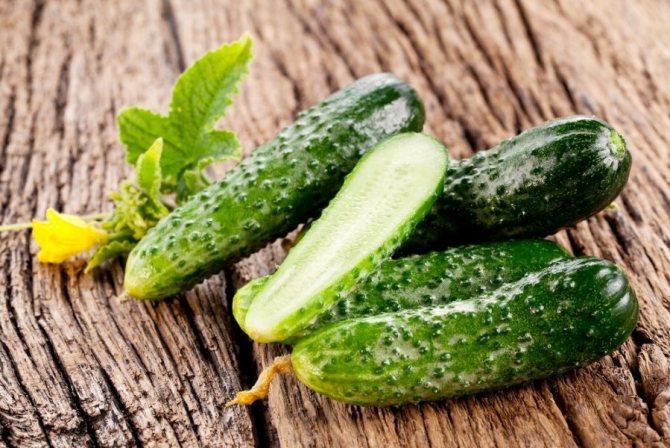
Cucumbers contain many vitamins and microelements
The calorie content of a cucumber is 15 kcal per 100 grams, which allows it to be recognized as a dietary vegetable.
Compound
Cucumbers are 95% water. At the same time, they contain a very small amount of proteins, fats and carbohydrates, but are rich in minerals (phosphorus, calcium, magnesium, iron, potassium) and fiber.
Table: useful substances in cucumber
| Name of substance | Quantity per 100 g. fresh vegetable |
| Vitamin A | 0.06 mg |
| Vitamin B1 | 0.03 mg |
| Vitamin B2 | 0.04 mg |
| Vitamin B3 | 0.3 mg |
| Vitamin B6 | 0.04 mg |
| Vitamin B9 | 4 mcg |
| Vitamin C | 10 mg |
| Vitamin E | 0.1 mg |
| Vitamin H | 0.9 mcg |
| Vitamin PP | 0.2 mg |
| Iodine | 3 mcg |
Useful properties of cucumbers:
- Cucumbers contain complex organic substances that help the body with metabolism and improve digestion.
- Potassium improves kidney and heart function.
- The high fiber content in cucumbers helps the body regulate intestinal function, removes toxins and excess cholesterol.
- It has a diuretic, choleretic and laxative effect. If you drink a cucumber with milk, you can cleanse your intestines in a short time.
- Contains alkaline salts that neutralize acidic compounds that disrupt metabolic processes and contribute to the appearance of stones in the liver.
- Fruits are a source of iodine. Moreover, those compounds that are best absorbed by the body.
- They help digest proteins (this is especially important for people suffering from tuberculosis), so cucumber salad is a good side dish for meat dishes.
- Helps reduce blood glucose. An indispensable product in the diet of people suffering from diabetes.
- Decoctions of cucumber leaves help with bleeding.
Contraindications
Not in all cases, cucumbers are beneficial for the body:
- The presence of diseases of the gastrointestinal tract: gastritis, ulcers, pancreatitis, etc. Fresh cucumber increases the acidity of gastric juice.
- Kidney diseases: acute or chronic nephritis, renal failure, kidney stones.
- Pickled cucumbers are not recommended for use in case of liver diseases: hepatitis, liver failure.
Interesting! Pickled cucumbers have the lowest calorie content - about 11 kcal/100 g. The largest is the Antillean cucumber (or Anguria). It contains about 44 kcal/100 g.
How to choose the right cucumber for a child?
You can introduce cucumber into your diet only in the summer, when the summer season is in full swing. Autumn vegetables are also very tasty, aromatic and healthy. You should not buy fruits that are sold in winter or spring. When growing them, nitrates are used for rapid growth and pesticides to kill pests. When purchasing, give preference to ground vegetables, and avoid greenhouse vegetables.
Before purchasing, be sure to inspect the fruit from all sides. It should be bright green, without dents or cracks. Limp and soft cucumbers are also not suitable for a child. It is advisable that the length of the vegetable be no more than 7-8 cm. Do not take fruits with black spots and cracks - bacteria and microbes accumulate in them, which can no longer be gotten rid of. If you cannot find suitable vegetables, it is better to refuse to buy them altogether than to feed your child cucumbers of dubious quality.
Allergy to cucumbers
Allergies to cucumbers are very rare. An undesirable reaction occurs in children with hypersensitivity to products. This pathology almost never occurs in adults and appears more often in children. The reason for this is a weak and immature digestive tract.
Allergies are also associated with heredity and are passed on to children at the genetic level. Be sure to keep in mind that if you have a history of allergies in your family, the risk of the same problems in your child increases significantly. During treatment, you need to use antihistamines - Suprastin, Fenistil, Tavegil and others.
Fresh cucumbers can cause severe allergies in young children. Previously it was believed that this is a hypoallergenic vegetable, but recently the frequency of allergic reactions has begun to increase. Call them:
- the vegetable itself, if it has managed to absorb various chemicals and fertilizers;
- stems and leaves of the plant;
- pollen.
The allergy mainly manifests itself on the face in the form of a rash near the mouth. Stomatitis, sore throat, sore throat and other unpleasant symptoms may develop. Severe allergic reactions include nausea, lacrimation, and Quincke's edema. When the above symptoms first appear, be sure to consult your doctor, as the child’s life may be at risk.
Allergy
Cucumber has long been considered hypoallergenic, and only recently have scientists begun to note cases of intolerance.
Factors that cause an allergic reaction in a child:
- Pollen provokes an increase in antibodies in the blood - class E immunoglobulins. The body mistakenly perceives pollen as a threat and releases a number of biologically active substances that cause allergy symptoms.
- Leaves and stems can provoke a negative reaction if they come into contact with the baby's skin.
- A cucumber, like a sponge, absorbs chemical compounds that are used to treat the soil and the plants themselves during the process of growth and maturation. In this case, herbicides, mineral and organic fertilizers become the cause of the allergic response.
What are the benefits of cucumbers?
It is difficult to overestimate the benefits of fresh cucumber, because this vegetable is the leader in water content, which accounts for up to 97-98% of the mass. In addition, it contains proteins, fats and carbohydrates. Their percentage depends on fertilizers, watering and the composition of the soil in which the cucumber grows. It also contains many vitamins, fructose, healthy essential oils and plant enzymes.
Of particular value in this product is fiber, which is found in large quantities in cucumber peel. It cleanses the body of accumulated toxins. This is especially true when baby food was not of sufficient quality.
Tartronic acid is another unique component of the composition. It reduces the rate of growth of fat deposits and is indicated for overweight people. Cucumbers are used as a therapeutic food for obesity.
In small quantities, cucumber contains:
- Iodine. Positively affects the functioning of the thyroid gland. Iodine is involved in mental development and strengthens the nervous system. Iodine deficiency in a child increases fatigue, reduces attention and leads to disruptions in the functioning of the body.
- Silicon. Strengthens hair, nails and is responsible for skin health. A lack of this microelement in the body can provoke pathological conditions - softening of bones and anemia.
- Sulfur. One of the 5 most important components for the human body. It is involved in protein synthesis, including collagen. Sulfur affects blood clotting, and its deficiency leads to decreased immunity.
Can children have cucumbers?
Undoubtedly, cucumber is a very healthy vegetable, since it contains not only water with mineral salts dissolved in it, but also many vitamins. The peel, for example, contains vitamin C, carotene and fiber; the pulp contains enzymes and essential oils that help increase appetite and improve digestion. Cucumber tastes good and is liked by many children. But at the same time, cucumber can cause digestive upset in a child. To answer the question whether a child can eat a cucumber, let’s take a closer look at the beneficial and negative properties of a cucumber.
Benefits of cucumber for children
— is a low-calorie and hypoallergenic product, can be included in the diet of obese children;
— eating cucumber leads to an increase in the baby’s appetite;
— cucumber has a mild laxative effect, so it is indicated for constipation in infants;
— the fiber contained in cucumber stimulates digestion;
— freshly squeezed cucumber juice has disinfecting properties, it can kill pathogenic microorganisms, even Staphylococcus aureus;
— tartranic acid, which is part of cucumber, is involved in carbohydrate-fat metabolism;
— contains potassium, which is necessary for the normal functioning of the cardiovascular system;
— contains vitamin C, which participates in redox reactions, promotes the absorption of iron, strengthens the vascular wall of capillaries;
- contains silicon and sulfur, which affect the health of skin, hair, nails and teeth;
— contains vitamin K, which is responsible for coagulation processes in the body and is involved in the absorption of calcium;
— contains chromium, which regulates blood glucose levels by enhancing the action of insulin;
— contains magnesium, which is necessary for the normal functioning of the nervous system;
— contains folic acid, which prevents the development of anemia;
- contains iodine, which is necessary for the normal functioning of the thyroid gland.
Why young children should not be given cucumbers
Although cucumbers are a hypoallergenic product, they still have a number of features due to which they are not given to children under 1 year of age.
Harm of cucumber
- contains a lot of coarse fiber, which will irritate the fragile children's gastrointestinal tract, the child may experience abdominal pain, flatulence, and diarrhea.
— poorly washed fresh cucumbers can cause an intestinal infection, and the spots on cucumbers are very difficult to wash off.
- cucumbers can accumulate nitrates, so if you buy cucumbers in a store, there is a risk that they contain them even in summer.
— for children prone to diarrhea, cucumbers are contraindicated.
— fresh cucumber in a child will increase the acidity of gastric juice, so cucumbers are contraindicated for children with gastrointestinal diseases (gastritis, peptic ulcer, biliary dyskinesia).
- Children should be given cucumber carefully so that they do not choke, as it is slippery and smooth.
- salted and pickled cucumbers in a child can lead to swelling, thirst, and upset bowel movements.
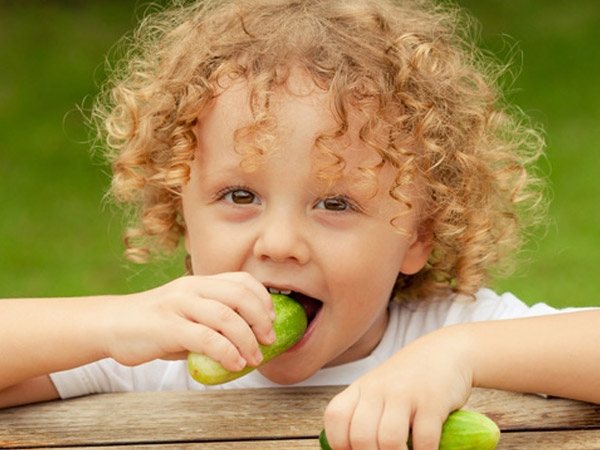
At what age is it best to give?
It is recommended to introduce cucumber as complementary food after a year. Early introduction to this product may lead to colic.
The benefits of pickled and pickled cucumbers for a child’s body are much less than fresh ones, since vinegar and salt are used in their preparation, and there are almost no vitamins and other useful substances left in them after processing. And although children often really like such products, they should not be given to children under 2-3 years of age. Some doctors recommend introducing a child to pickled and pickled vegetables at age 5.

At what age can you give fresh cucumber to your child?
First you need to decide on a fresh vegetable. After all, with the arrival of warm summer days, it is with fresh vegetables and fruits that you want to feed your child.
When asked by parents at what age a child can be given cucumber, pediatricians answer – after a year.
The baby’s underdeveloped, delicate gastrointestinal tract is not yet ready for the tests that a fresh cucumber suggests for it. The fact is that the vegetable can cause bloating, diarrhea, or, conversely, constipation. This means that offering a baby, even the most selected cucumber picked from our own garden, we risk provoking colic and stool upset.
As for allergenicity, the answer is twofold. If the fruit is grown in its own garden without the use of chemical fertilizers and other growth enhancers, then the cucumber can be called a low-allergenic product. But a vegetable bought in a store does not guarantee purity and environmental friendliness and can easily cause an allergic reaction. Therefore, if we talk about the baby’s diet, then it is better not to experiment. It is better to offer store-bought products to an older child (2-3 years old) whose allergic status is stable.
At what age can you give a pear to a child? How to make pear puree?
Pear is a very healthy fruit, so it is one of the first to be introduced into children’s diets. It is important to know how to properly introduce fruit in order to avoid unpleasant consequences that can manifest themselves in the form of allergies, cause heaviness in the stomach, and also cause colic.
Until the age of six months, babies eat only mother’s milk, and then they will be introduced to new food. For babies who are on artificial nutrition, complementary foods are introduced earlier (from 4-5 months). Getting to know new foods starts with vegetable and fruit purees. Fruits that are good for these purposes are apples and pears. Every mother must know the benefits of pears and in what form to begin introducing them into the child’s diet.
How to feed children cucumbers?
Many experts do not recommend giving cucumbers to babies until they reach one year of age. This happens because the stomach of young children is still too weak to digest such food and the child may experience colic and increased gas production.
There is an opinion that cucumbers can be introduced into complementary foods as early as six months in order to develop motor skills and chewing skills, and massage the gums. But still, for such purposes, you can give your child special toys, but you should not experiment with children’s digestion in this way.
Naturally, like any new product, cucumbers should be introduced into the diet of a one-year-old child carefully, carefully monitoring his reaction. If nothing unpleasant happens, then you can safely feed your baby this tasty and healthy vegetable. To begin with, grind the pulp into porridge.
And only when the child grows up a little can you give him a whole cucumber, previously peeled. It will also be possible to make salads based on cucumber, but season them not with sour cream, but with vegetable oil. Try to do without salt.
Many experts believe that until the age of three, this seasoning should not be present on the children's menu.
Here are some simple and tasty salads that you can safely give to your child.
- Mix cucumber, boiled egg, a little dill and oil. All ingredients should be finely chopped, or better yet, grate them. When the child grows up, the butter can be replaced with sour cream or natural yogurt. This salad can be a great lunch replacement.
- You can make a salad with the addition of boiled chicken meat or grated cheese, carrots, and bell pepper.
In general, children's salads based on cucumber can be made in almost any way. All vegetables to which your baby’s body reacts normally can be added little by little to the dish. True, tomatoes and radishes, so beloved by us, will have to be excluded. These vegetables are still too heavy for a child's stomach.
In addition to the general rules for introducing cucumber into complementary foods, it would be useful to mention what the vegetables chosen for these purposes should be. Everything is simple here.
Try to buy vegetables in large supermarkets or markets where all products are pre-sale tested and there is no risk of buying cucumbers with nitrates.
MORE ABOUT: Paracetamol during pregnancy for headache, toothache, fever. Dosage, instructions, consequences
In what form can it be given?
A fresh cucumber should be peeled and then given to the child whole or grated. If the cucumber you are going to give to your child is grown in your garden, you don’t have to remove the skin - just rinse the fruit well.
Cucumbers can also be offered to one-year-old children in the form of various salads, seasoned with vegetable oil. You can offer your child a salad of cucumber and boiled egg, seasoned with sour cream. Since the combination of cucumbers and tomatoes in a salad puts a strain on the baby’s digestive tract, such dishes are recommended to be given to older children.
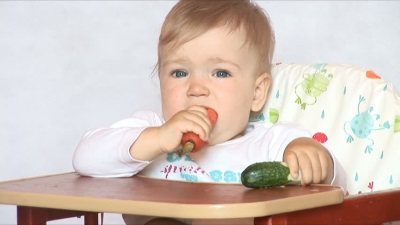
At what age can you give vegetable salads?
In addition to fresh tomatoes and cucumbers, doctors recommend introducing salads into complementary foods for 2-3 year old children. Considering the digestive tract has not yet been formed, gastroenterologists recommend diluting vegetable salad with a boiled egg.
Note to moms!
Until 3-4 years of age, exclude pickled and canned cucumbers and tomatoes from the child’s diet, which, after heat treatment, are less beneficial for the infant’s body.
If, after eating this food, your baby feels discomfort in the lower abdomen or pain, then it is urgent to postpone the intake of such food until a later time.
Conclusion
Buy your child only those vegetables that were grown in the garden. Such fruits contain a minimum of nitrates and therefore have more benefits for the baby’s body. Upon visual inspection, cucumbers and tomatoes should be whole and free of cracks and bruises. Give preference to young fruits rather than overripe ones, which, while growing in the ground, have lost some of their beneficial properties.
Every mother really wants to diversify her baby’s diet and from time to time offers her child new products. It is important that the nutritional system of a maturing body is filled with all vitamins and beneficial elements. With the onset of summer, cucumbers are among the first to begin to ripen, which you just want to offer to your baby.
How to choose the right cucumber?
For baby food, it is best to purchase ground cucumbers. Choose dense cucumbers with rich color and matte skin for your baby. Do not buy fruit that has bruises, cracks or stains. Excessively large (overripe) vegetables are also not suitable for feeding children.
Find out if your baby's weight is normal by using the following calculator. Height and weight calculator
New and popular:
- Refusal of vaccinations.
Legal basis Recently, more and more parents have been asking questions: whether to vaccinate their child, how much... - Espumisan® 40 for children Russian Kazakhstan Trade name Espumisan® 40 for children International nonproprietary name Simethicone Dosage formEmulsion 40 mg / 5 mlCompositionIn…
- Why is Divigel prescribed during IVF, how to apply it correctly and how to stop it during pregnancy? Women who cannot conceive a child often resort to assisted reproductive technologies, primarily…
- Komarovsky. Part 1. advice for pregnant women. WHAT TO WEAR?• something that does not press or pinch; that which emphasizes; what he...

